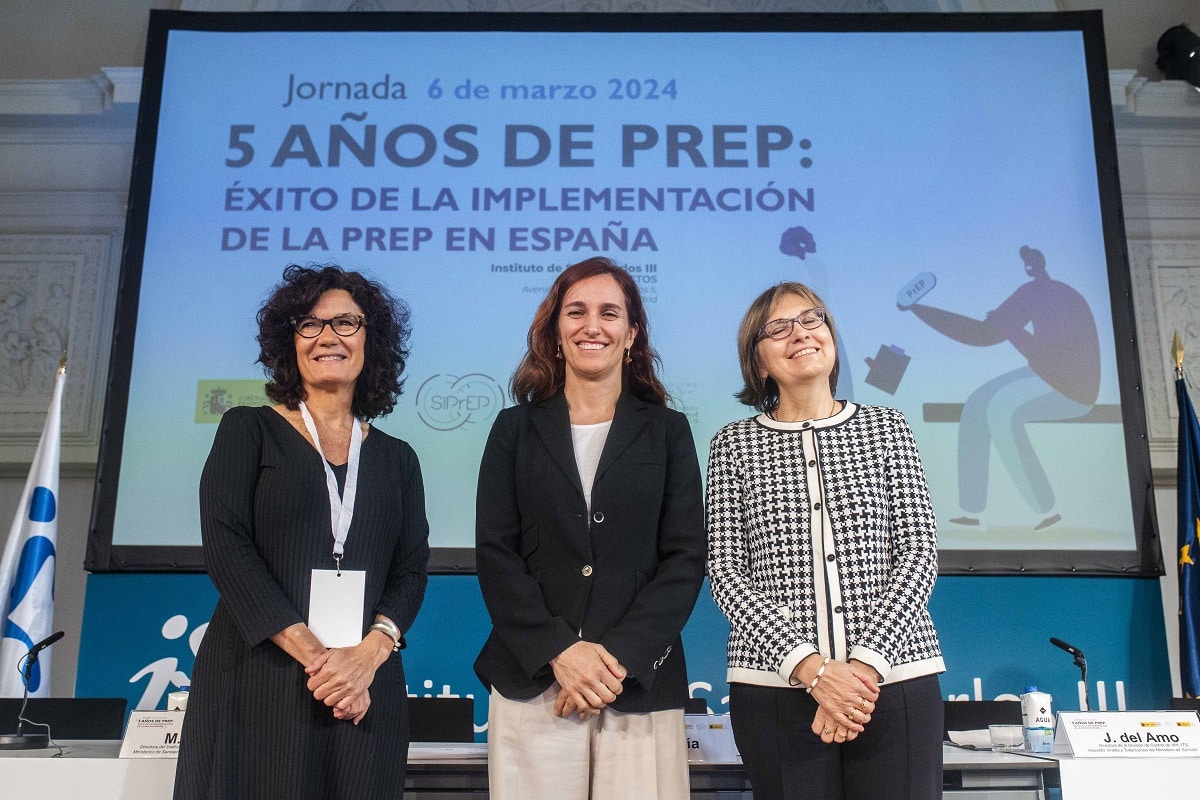Five years of successful implementation of PrEP in Spain

“PrEP represents an important milestone in HIV prevention and gives us the opportunity to significantly reduce the scale of a pandemic for which a successful solution has been found.” The Minister of Health announced this on Wednesday. Monica Garcia who announced that the ministry would “continue to take steps” to introduce HIV pre-exposure prophylaxis (PrEP), especially in the most vulnerable groups.
Garcia made these statements at the opening of the conference “Five years of PrEP: the success of the implementation of PrEP in Spain,” which was attended by the director of the Carlos III Institute of Health, Marina Pollan, and the director of the Center for HIV, STIs, and Viral Infections. Department for the Fight against Hepatitis and Tuberculosis of the Ministry, Julia del Amo.
According to the Ministry of Health, over these five years, 23,670 people took part in this program. The number has increased by almost 10,000 in the past year. More than 2,000 people are currently being monitored for follow-up and evaluation.
However, Garcia estimated that “it is difficult to achieve 100% success, and that is why it is important to take measures such as improving accessibility and reaching all the most vulnerable groups of the population.”
The program “is not just popping a pill,” Monica Garcia recalled, but a much broader public health approach that includes prevention of other sexually transmitted diseases, promotion of condom use, vaccination when necessary, early detection and care.
“I am confident that we will continue to take steps forward in our fight against HIV and continue to find common spaces for learning, collaboration and commitment,” she said.
HIV pre-exposure prophylaxis (PrEP) consists of one tablet of tenofovir disoproxil and emtricitabine (TDF/FTC) given daily to people at risk of infection. It is part of a package of pharmacological and non-pharmacological interventions aimed at preventing HIV, called a combination prevention strategy.
The Minister stressed that “these five years of success are evidence that when policy goes hand in hand with science and evidence, it can produce good results.”
In Spain, PrEP was included as a pharmaceutical benefit in the basic portfolio of services of the National Health System on 30 September 2019. In March 2020, the HIV Pre-Exposure Prevention Program Information System (SIPrEP) was launched in Spain with the aim of monitoring the development and results of public PrEP programs in Spain and knowledge of the characteristics, their clinical evolution and the effectiveness of this new intervention among PrEP users in different autonomous communities.
This is a collective success, the minister noted, so she congratulated the initiators and implementers of this initiative.
A total of eleven autonomous communities are providing data to learn about the progress of this initiative, but today it was emphasized that more participation is needed.
“This is a success story. This is not a pill, this is a whole public health program, global STI prevention, a system agreed with WHO and UNAIDS, which works throughout Spain,” said ISCIII Director Marina Pollan. , who also emphasized that the SIPrEP information system is fundamental and facilitates the evaluation of the PrEP program.
“Evaluating the effectiveness of this public health measure in real-world and specific settings is key to further improvement,” he said.
The majority of PrEP users were MSM, young people born in Spain. Most of them had completed compulsory secondary education, and half were employed.
In almost 20% of cases, the current PrEP program was accessed through a primary health care center or an HIV/STD testing center, respectively, highlighting its importance as a PrEP promotion tool and mode of program participation. Of those who had previously taken PrEP, almost a quarter had not received medical supervision, mostly those who purchased the drugs online. The characteristics of PrEP users in relation to risky practices show a high risk of HIV infection.
6-8% of patients were diagnosed with chlamydia trachomatis, gonococcus, and syphilis at the first visit, highlighting the importance of these programs in identifying and treating undetected STIs.
Nearly a quarter of users reported using drugs in the previous 3 months. Additionally, up to 13% of PrEP users engaged in chemsex in the 3 months prior to the baseline visit. Because of the high prevalence of drug use, supportive counseling about drug use needs to be strengthened at each follow-up visit.
Of the total number of users, 13% interrupted the program for various reasons. The most common were lack of risk perception and user transfer.
Seroconversion to HIV was very rare but occurred in 3 cases; One in three users who became infected with HIV during the study period had problems adhering to PrEP.